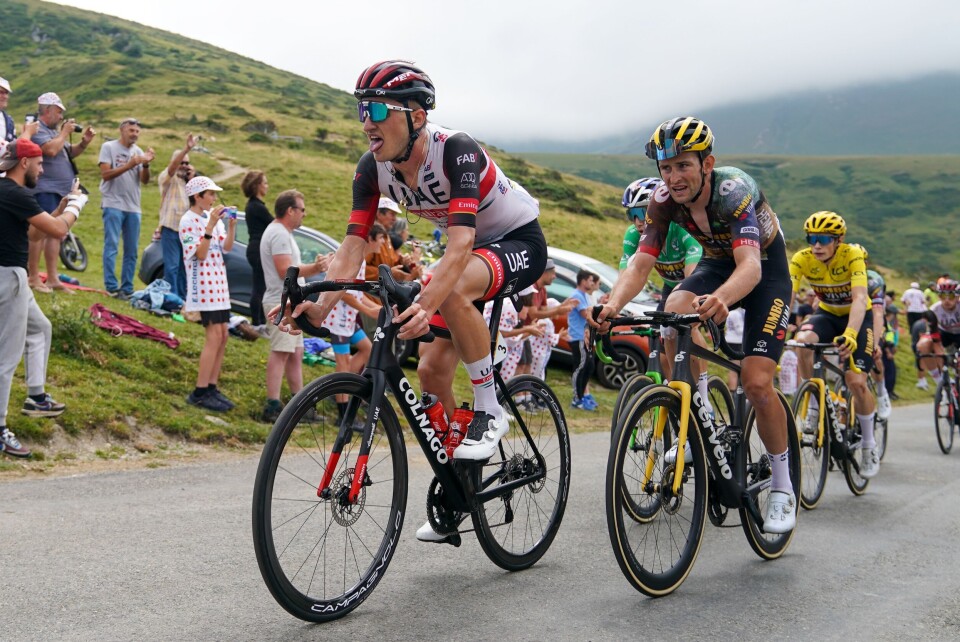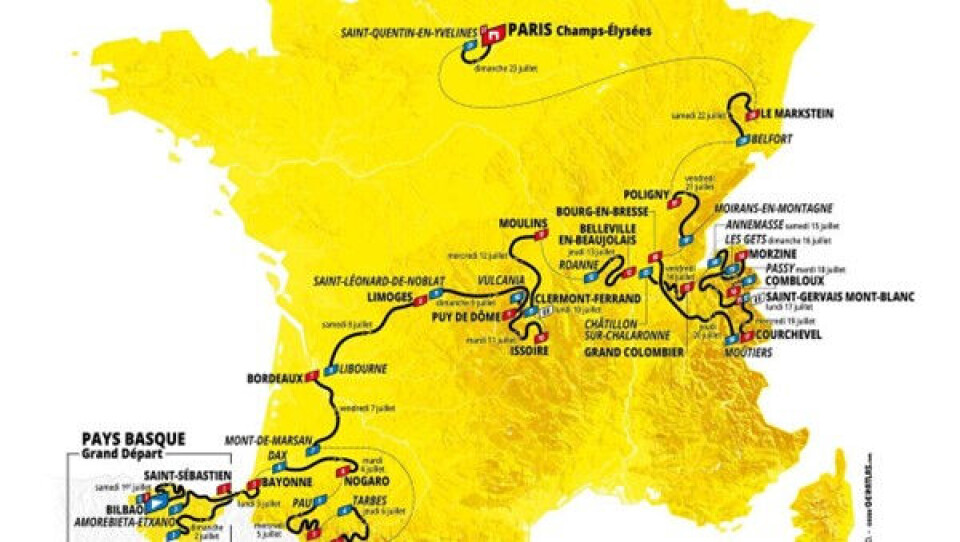-
The curious case of Good Friday: Why only some parts of France get the day off
Three French departments benefit from two extra public holidays
-
How long does it take to sell property in different areas of France? New study
Many major cities are showing signs of recovery when it comes to supply, demand, prices, and time to sell
-
Map: Car insurance costs rise in France - see the average in your region
Multiple studies show that costs are rising by around 5% year-on-year, with major differences by region and vehicle model
Interesting facts on this week’s Tour de France destinations
What do we know about the French places that the cycling extravaganza is passing through?

Monday, July 17: Rest day
Tuesday, July 18: Passy to Combloux (22.4km)
This leg of the race is a solo race, instead of the usual endurance run. Racers are sent one by one on the 22.4km track and timed. This format means that they cannot rely on teammates to shield them from the wind.
The race is still in the French Alps. On Tuesday it starts in Passy, which is where famous scientist Marie Curie died in 1934, at the Martel de Janville sanatorium.
The commune of Passy was an important supplier of explosives during World War One, manufacturing cheddite bombs, named so because they were made in the nearby village of Chedde.
Tuesday’s race ends in Combloux, a town described by French writer Victor Hugo in the 19th century as "the pearl of the Alps encased in its glaciers". It was one of the first towns to rely on mountain tourism, as early as the 1920s.

Wednesday, July 19: Saint-Gervais Mont Blanc to Courchevel (166km)
After the sprint on Tuesday, the race returns to Saint-Gervais. This run is particularly difficult, with a final climb of nearly 1900 metres in altitude over a 30 km distance.
Saint-Gervais could have been part of Switzerland. During debates about the future of the Duchy of Savoy - a territory that included what is today the departments of Savoie, Haute-Savoie and the Alpes-Maritimes - in the 1860s, a petition to join northern parts to Switzerland was circulated and attracted more than 13,000 signatures. They eventually decided to become part of France.
Courchevel was one of the first ski resorts in France to be developed specifically for tourism. In 1925, English skier Arnold Lunn - whose father Henry Simpson Lunn founded a travel agency that was the precursor to the now-defunct Lunn Poly - was the first to suggest skiing in the area.
Today, Courchevel is one of the most visited ski resorts in the world, with a reputation of luxury that attracted wealthy Russians in recent decades. But sanctions linked to Moscow’s invasion of Ukraine have seen their number decline.
Read also:Tour de France, Race for Madmen
Thursday, July 20: Moûtiers to Bourg-en-Bresse (185km)
Moûtiers is situated in the Tarentaise Valley in the French Alps. The name Tarentaise originates from Moûtiers’ name, Darantasia, during the Roman era. Moûtiers, originates from the word monastery, as the city was the religious capital of the Darantasia archdiocese.
Bourg-en-Bresse is situated between Macon and Geneva. The area is home to the Bresse chicken, which is protected by the AOC (Appellation d’Origine Protégée) label. It is often served at Christmas as poularde or capon. The former designates chicken slaughtered before they have laid eggs, and the latter are castrated roosters. Combined with a special, fattening diet of milk and grain, they are known to be more tender and flavourful than your regular chicken.
Friday, July 21: Moirans-en-Montagne to Poligny (173km)
Moirans-en-Montagne is a small hamlet on the slopes of the Jura mountains, situated near the Swiss border, north-west of Geneva. It is famous for its production of artisanal wooden toys, with major companies such as Smoby and Vilac headquartered there for more than a century.
Poligny, further north,sits at the foot of the Jura mountains, southeast of Dijon. It is known as the capital of Comté, which is the AOC cheese that is produced in the greatest quantities.
Saturday, July 22: Belfort to Le Markstein Fellering (133.5km)
Belfort is situated south-west of Mulhouse and near France’s borders with Switzerland and Germany. A statue called the Lion de Belfort, was built beneath the citadel by French architect Frédéric Auguste Bartholdi to honour the city’s resistance during the Franco-Prussian War of 1870. Bartholdi is best known for building the Statue of Liberty.
Belfort was also the finish for a foot race organised in 1892 by Le Petit Journal, a popular newspaper at the time. The race took 800 participants from Paris to Belfort, over 380 kilometres, with only 380 completing the course in under 10 days. The race generated a lot of attention and greatly contributed to Le Petit Journal’s sales that year.
Markstein became the first ski resort in the Vosges mountains to build a ski drag lift in 1947. It has been home to prestigious sporting events, such as the 1983 and 1987 Alpine Ski World Cups.
Sunday, July 23: Saint-Quentin-en-Yvelines to Paris (115.5km)
On Sunday, after a gruelling three weeks, the Tour de France will be on its final stage.
The sprint starts in Saint-Quentin-en-Yveline, a town situated to the west of Paris that houses multiple renowned educational establishments, such as Paris-Saclay University, the Pierre-Simon-Laplace Research Institute and the ESTACA engineering school.
From there, the mostly flat terrain will see cyclists give everything they have left in the tank to be the first to cross the finish line in Paris, on the Champs-Elysées. The famous avenue has been the traditional last step of the race since 1975, with the awards ceremony conducted there as well.
Related articles
Beer cheat, peeing, Donald Trump: Six facts about the Tour de France
Why are Tour de France cyclists called ‘runners’ in French?
























